This is a list of, in no particular order, my personal picks of the best comic books coming out in 2013. The selection only reflects those titles that have not been released in English prior to this year, limiting the amount of reprinted material somewhat.* Just as was the case with last year’s list, I’m aware that there are already oodles of list like this around and I certainly harbor no pretensions of significance in my own selection. I do invite readers to comment as they see fit – I have not read even a fraction of the many titles hitting the shelves this past year, and I am sure that there are gems I have missed, overlooked, or otherwise wrongfully left out. 2013 was a peculiar year in some respects. The old hands of alternative comics were less prolific than in prior years and the tragic passing of Kim Thompson led to a measurable drop in the release of high quality European comics on American shores. At the same time, a wave of great manga titles have hit the shelves recently, from relative newcomers to long-due translations of classic works, making this the strongest year in recent memory for translated quality manga. Finally, a slew of great self-published artists are now being picked up by publishers such as Fantagraphics and Koyama Press, and one can only hope that this will give these talented people the exposure they (and the consumers) deserve.
Seiichi Hayashi, Gold Pollen and Other Stories (PictureBox)
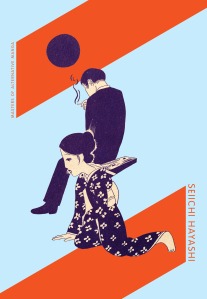 A collection of key works from the master mangaka Seiichi Hayashi, Gold Pollen and Other Stories is a brilliant example of how to edit, translate, and present this type of classic alternative manga. The stories are drawn from late sixties and early seventies Garo issues and include the fantastic “Red Dragonfly,” which is perhaps Hayashi’s single best work. The art and narrative technique vary greatly across the book, which showcases Seeichi’s many strengths. Ryan Holmberg’s accompanying essay is exemplary and adds dimensions to the reading of these stories that would otherwise be obfuscated for most non-Japanese readers. What is more, the volume is the first installment in a new series entitled Masters of Alternative Manga under the editorship of Holmberg and one can only hope that this is the first step in getting more of these seminal and hitherto overlooked masterworks of Japanese comics to a discerning foreign audience.
A collection of key works from the master mangaka Seiichi Hayashi, Gold Pollen and Other Stories is a brilliant example of how to edit, translate, and present this type of classic alternative manga. The stories are drawn from late sixties and early seventies Garo issues and include the fantastic “Red Dragonfly,” which is perhaps Hayashi’s single best work. The art and narrative technique vary greatly across the book, which showcases Seeichi’s many strengths. Ryan Holmberg’s accompanying essay is exemplary and adds dimensions to the reading of these stories that would otherwise be obfuscated for most non-Japanese readers. What is more, the volume is the first installment in a new series entitled Masters of Alternative Manga under the editorship of Holmberg and one can only hope that this is the first step in getting more of these seminal and hitherto overlooked masterworks of Japanese comics to a discerning foreign audience.
David B., Incidents in the Night, volume 1 (Uncivilized Books)
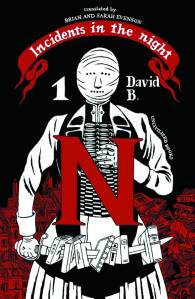 One of David B.’s best comics has at long last been translated and published in English, mere weeks before the long-awaited second volume of this curious and enigmatic series hit the shelves in France. Incidents in the Night is a strange concoction of Borges, Gautier, film noir, and fin-de-siècle genre fiction. It tells the story of David B. the collector who dreams of a certain early nineteenth century journal and finds himself compelled to seek it out and read it, casting him into a surreal world of obsessive bibliophiles, ancient demigods, and labyrinthine Parisian bookstores. The narrative is loose and fabulating, seemingly progressing at its own accord, and the feverish drawings represent the artist at his imaginative height. A work that belongs in any serious comics fan’s collection, right alongside Epileptic and The Armed Garden.
One of David B.’s best comics has at long last been translated and published in English, mere weeks before the long-awaited second volume of this curious and enigmatic series hit the shelves in France. Incidents in the Night is a strange concoction of Borges, Gautier, film noir, and fin-de-siècle genre fiction. It tells the story of David B. the collector who dreams of a certain early nineteenth century journal and finds himself compelled to seek it out and read it, casting him into a surreal world of obsessive bibliophiles, ancient demigods, and labyrinthine Parisian bookstores. The narrative is loose and fabulating, seemingly progressing at its own accord, and the feverish drawings represent the artist at his imaginative height. A work that belongs in any serious comics fan’s collection, right alongside Epileptic and The Armed Garden.
Hellen Jo, Frontier #2 (Youth in Decline)
 The second issue of Youth in Decline’s Frontier series features the work of the gifted cartoonist Hellen Jo. Somewhere between a monograph and a comic book, the slim volume packs a powerful punch with its non-traditional narrative structure and its dazzling images that manage to be both playful and incredibly cool. The scenes revolve around roving gangs of teenage girls, stylish and menacing in their perfect appearance and seemingly casual resort to violence and bloodshed. There’s a raw artistic nerve and attitude that come through in these pages and in the accompanying interview. Coupled with the first volume, featuring work by Uno Moralez, this is a very promising start for publisher Ryan Sand’s newest venture and I can’t wait for the third installment.
The second issue of Youth in Decline’s Frontier series features the work of the gifted cartoonist Hellen Jo. Somewhere between a monograph and a comic book, the slim volume packs a powerful punch with its non-traditional narrative structure and its dazzling images that manage to be both playful and incredibly cool. The scenes revolve around roving gangs of teenage girls, stylish and menacing in their perfect appearance and seemingly casual resort to violence and bloodshed. There’s a raw artistic nerve and attitude that come through in these pages and in the accompanying interview. Coupled with the first volume, featuring work by Uno Moralez, this is a very promising start for publisher Ryan Sand’s newest venture and I can’t wait for the third installment.
Joe Sacco, The Great War (W. W. Norton)
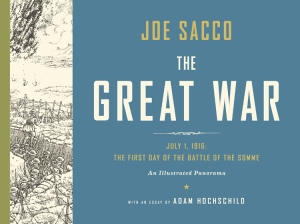 With interviews in The New York Times, The Guardian, The New Yorker, and NPR Joe Sacco’s newest creation has got to be one of the most talked-about comics of the year – 2013’s true mainstream pick, if you will. Since The Great War already has more buzz than any piece of cartooning could ask for, I’m not going to spill too much ink on a description here. Suffice to say it is a beguiling and irrefutable piece of artistic craft – as well-researched and unflinchingly depicted as we have come to expect from the premier journalist-cartoonist of the field. While the format itself is hardly new, neither in a historical nor a contemporary context, it is still unusual enough to call forth strong reactions, greatly helped on by some of Sacco’s more interesting artistic choices: from the obvious lack of speech or sound effects to the more subtle play with time shifts and the horrific repetitiveness of trench warfare hinted at at the end of the panorama.
With interviews in The New York Times, The Guardian, The New Yorker, and NPR Joe Sacco’s newest creation has got to be one of the most talked-about comics of the year – 2013’s true mainstream pick, if you will. Since The Great War already has more buzz than any piece of cartooning could ask for, I’m not going to spill too much ink on a description here. Suffice to say it is a beguiling and irrefutable piece of artistic craft – as well-researched and unflinchingly depicted as we have come to expect from the premier journalist-cartoonist of the field. While the format itself is hardly new, neither in a historical nor a contemporary context, it is still unusual enough to call forth strong reactions, greatly helped on by some of Sacco’s more interesting artistic choices: from the obvious lack of speech or sound effects to the more subtle play with time shifts and the horrific repetitiveness of trench warfare hinted at at the end of the panorama.
Rutu Modan, The Property (Drawn and Quarterly)
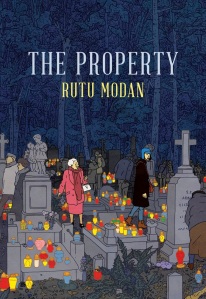 In many ways one of the most traditional comics on this list, Rutu Modan’s The Property is nevertheless an accomplishment of refined narrative craft. Neither as intense nor as defiant as her much-lauded Exit Wounds, the Israeli cartoonist’s newest book is a meditation on family and history – a deliberately-paced and nuanced tale of a woman and her granddaughter’s trip to Poland in the hopes of reclaiming property lost in the war. The focus is on the inter-personal relationship between the two women and the way it develops over the course of their journey, which is populated by a rich gallery of quirky and believable characters. The ligne claire style and witty dialogue go well together and Modan delivers in both smart plotting and compelling protagonists.
In many ways one of the most traditional comics on this list, Rutu Modan’s The Property is nevertheless an accomplishment of refined narrative craft. Neither as intense nor as defiant as her much-lauded Exit Wounds, the Israeli cartoonist’s newest book is a meditation on family and history – a deliberately-paced and nuanced tale of a woman and her granddaughter’s trip to Poland in the hopes of reclaiming property lost in the war. The focus is on the inter-personal relationship between the two women and the way it develops over the course of their journey, which is populated by a rich gallery of quirky and believable characters. The ligne claire style and witty dialogue go well together and Modan delivers in both smart plotting and compelling protagonists.
Michael DeForge, Lose #5 (Koyama Press)
 Despite the refusal of a few critics to toe the line, Michael DeForge is still the proverbial hot new shit in North American alternative comics, going on several years now (although I’m not entirely convinced that you can label someone working on Adventure Time “alternative”). This year has seen the release of a long-ish webcomic, a larger collection of various pieces, and a new issue of the Lose anthology series. The latter is for my money the strongest of DeForge’s artistic output in 2013 and deserves a spot on any best-of-the-year list. The story “Living Outdoors,” about two kids and their adventures with hallucinogens, is worth the price of admission alone, but the rest of the book is equally excellent. DeForge continues to do his own thing and as long as he keeps dishing out humorously told and artistically unique works like this, I am fully on board with that.
Despite the refusal of a few critics to toe the line, Michael DeForge is still the proverbial hot new shit in North American alternative comics, going on several years now (although I’m not entirely convinced that you can label someone working on Adventure Time “alternative”). This year has seen the release of a long-ish webcomic, a larger collection of various pieces, and a new issue of the Lose anthology series. The latter is for my money the strongest of DeForge’s artistic output in 2013 and deserves a spot on any best-of-the-year list. The story “Living Outdoors,” about two kids and their adventures with hallucinogens, is worth the price of admission alone, but the rest of the book is equally excellent. DeForge continues to do his own thing and as long as he keeps dishing out humorously told and artistically unique works like this, I am fully on board with that.
Shigeru Mizuki, Kitaro (Drawn and Quarterly)
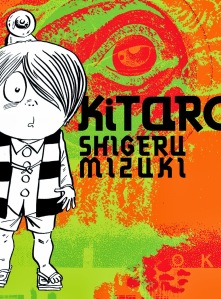 I am incredibly happy to finally see one of the best comics of all time released in English, and in a big, nicely-produced and well-translated collection to boot. Kitaro is an example of what comics aimed at youngsters should be: smart, funny, vibrant, and exciting as hell. It is also a prime example of the other side of the Garo movement – quality genre works that focus on narrative and character above avant-garde experimentation. In the course of a few years Shigeru Mizuki has become one of the key figures in the English-translation manga renaissance (helped on by the fact that his work is of a more consistent quality than that of, say, Osamu Tezuka), and the effort made by publisher Drawn and Quarterly and translator Zack Davisson is commendable. Kitaro is undoubtedly the best-known of Mizuki’s series in Japan and is the progenitor of a host of subsequent shōnen titles and yokai-centric works in general, so it’s about time an official translation arrived on these shores. If you like Hideshi Hino, Kazuo Umezu, or Yuki Midorikawa you owe it to yourself to read Kitaro.
I am incredibly happy to finally see one of the best comics of all time released in English, and in a big, nicely-produced and well-translated collection to boot. Kitaro is an example of what comics aimed at youngsters should be: smart, funny, vibrant, and exciting as hell. It is also a prime example of the other side of the Garo movement – quality genre works that focus on narrative and character above avant-garde experimentation. In the course of a few years Shigeru Mizuki has become one of the key figures in the English-translation manga renaissance (helped on by the fact that his work is of a more consistent quality than that of, say, Osamu Tezuka), and the effort made by publisher Drawn and Quarterly and translator Zack Davisson is commendable. Kitaro is undoubtedly the best-known of Mizuki’s series in Japan and is the progenitor of a host of subsequent shōnen titles and yokai-centric works in general, so it’s about time an official translation arrived on these shores. If you like Hideshi Hino, Kazuo Umezu, or Yuki Midorikawa you owe it to yourself to read Kitaro.
Simon Hanselmann, Life Zone (Space Face Books)
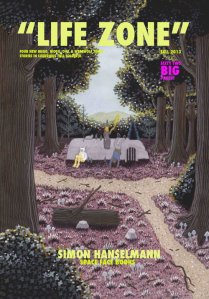 Simon Hanselmann is somewhat of a phenomenon – an artist whose work has almost exclusively appeared online until recently, but who has developed one of the most loyal and devoted followings among indie cartoonists that I’m familiar with these days. And this seems entirely deserved. His quirky, angst-filled, and hilarious stories of Megg, Mogg, and Owl seem a perfect fit with the spirit of the moment such as it is, and his characters manage to be both reprehensible and lovable, sometimes going from one to the other in the span of a few panels. Life Zone is a collection of all-new stories and serves as the perfect introduction to Hanselmann’s creations for those who have not already had a taste of the acerbic brew.
Simon Hanselmann is somewhat of a phenomenon – an artist whose work has almost exclusively appeared online until recently, but who has developed one of the most loyal and devoted followings among indie cartoonists that I’m familiar with these days. And this seems entirely deserved. His quirky, angst-filled, and hilarious stories of Megg, Mogg, and Owl seem a perfect fit with the spirit of the moment such as it is, and his characters manage to be both reprehensible and lovable, sometimes going from one to the other in the span of a few panels. Life Zone is a collection of all-new stories and serves as the perfect introduction to Hanselmann’s creations for those who have not already had a taste of the acerbic brew.
Kyoko Okazaki, Helter Skelter (Vertical)
 This was truly a great year for alternative manga, as witnessed by the release of an official English edition of Helter Skelter – the last work by groundbreaking mangaka Kyoko Okazaki, whose oeuvre has pushed the boundaries for what can be tackled in manga aimed at a female readership. The book is part thriller and part scathing critique of the fashion industry, a vicious story of a model whose mind unravels as her body falls apart, sending her on a bloody rampage through the society that used to adore her. Some critics have pointed to what they see as a problematic moral imbalance between male and female characters in a story that is ostensibly hailed as a feminist critique, but they miss that this is not a story of righting a wrong or solving a problem -rather, it is a brutal condemnation of the sickness of society, a diagnosis to which the only reaction can be a fiery and murderous rage. The men who attempt to quell this rage are either fools or accomplices, and certainly no heroes. The rose has teeth, and it chews on human flesh. “No matter how pretty the bunny, it’s just a lump of meat once it’s skinned.”
This was truly a great year for alternative manga, as witnessed by the release of an official English edition of Helter Skelter – the last work by groundbreaking mangaka Kyoko Okazaki, whose oeuvre has pushed the boundaries for what can be tackled in manga aimed at a female readership. The book is part thriller and part scathing critique of the fashion industry, a vicious story of a model whose mind unravels as her body falls apart, sending her on a bloody rampage through the society that used to adore her. Some critics have pointed to what they see as a problematic moral imbalance between male and female characters in a story that is ostensibly hailed as a feminist critique, but they miss that this is not a story of righting a wrong or solving a problem -rather, it is a brutal condemnation of the sickness of society, a diagnosis to which the only reaction can be a fiery and murderous rage. The men who attempt to quell this rage are either fools or accomplices, and certainly no heroes. The rose has teeth, and it chews on human flesh. “No matter how pretty the bunny, it’s just a lump of meat once it’s skinned.”
Gene Luen Yang, Boxers and Saints (First Second)
 Gene Luen Yang’s newest release proves that there is still plenty of excitement to be found in the world of YA comics. Arguably his magnum opus, Boxers and Saints is a two-volume epic set in the midst of the Boxer Rebellion in turn of the century Qing China. While the story generally follows the historical trajectory of the uprising fairly well, Yang does at times play fast and loose with historical accuracy in the time-honored tradition of so much historical fiction. In this case it seems entirely justified, as the narrative is ultimately a more universal tale of identity and belonging, rather than a minute portrayal of historical events or a biographical depiction of specific actors. The historical backdrop does serve the books remarkably well, however, and the parallel stories of two Chinese kids caught on opposite sides of a struggle between seemingly irreconcilable forces is gripping, emotive, and expertly told. The use of religious and mythological imagery is fascinating and Yang manages to weave a tale that should appeal to an audience that is broader than both the YA market and the usual comics crowd.
Gene Luen Yang’s newest release proves that there is still plenty of excitement to be found in the world of YA comics. Arguably his magnum opus, Boxers and Saints is a two-volume epic set in the midst of the Boxer Rebellion in turn of the century Qing China. While the story generally follows the historical trajectory of the uprising fairly well, Yang does at times play fast and loose with historical accuracy in the time-honored tradition of so much historical fiction. In this case it seems entirely justified, as the narrative is ultimately a more universal tale of identity and belonging, rather than a minute portrayal of historical events or a biographical depiction of specific actors. The historical backdrop does serve the books remarkably well, however, and the parallel stories of two Chinese kids caught on opposite sides of a struggle between seemingly irreconcilable forces is gripping, emotive, and expertly told. The use of religious and mythological imagery is fascinating and Yang manages to weave a tale that should appeal to an audience that is broader than both the YA market and the usual comics crowd.
Gengoroh Tagame, The Passion of Gengoroh Tagame (PictureBox)
 It’s not every year we see something like this come by: a beautifully presented, carefully translated English collection of a Japanese master, specializing in BDSM bara manga. Whether because of the unusualness of this event or because of the sheer artistic quality of the work itself, the release of The Passion of Gengoroh Tagame made a big splash in the North American alternative comics scene, with the buzz spilling over into the mainstream press to a degree rarely seen for any manga title. And deservedly so. Regardless of your sexual orientation or penchant for Japanese comics, Tagame’s work is something to behold and well worth seeking out. There are few people working in the medium who can muster the same level of visual power in their depiction of mass and muscle or who can call forth such visceral reactions of awe and fascination in their readers as Tagame. These stories tend to be more than a little disturbing, and their sources of inspiration span widely, from the classics of Victorian and Edo erotica to the modern artistic tradition of ero guro nonsensu. While there no doubt exists a certain audience for the work as erotic stimulus, the broader appeal of The Passion lies in its craft and its imagery, which is both shocking and fascinating; visually arresting and unapologetically outrageous.
It’s not every year we see something like this come by: a beautifully presented, carefully translated English collection of a Japanese master, specializing in BDSM bara manga. Whether because of the unusualness of this event or because of the sheer artistic quality of the work itself, the release of The Passion of Gengoroh Tagame made a big splash in the North American alternative comics scene, with the buzz spilling over into the mainstream press to a degree rarely seen for any manga title. And deservedly so. Regardless of your sexual orientation or penchant for Japanese comics, Tagame’s work is something to behold and well worth seeking out. There are few people working in the medium who can muster the same level of visual power in their depiction of mass and muscle or who can call forth such visceral reactions of awe and fascination in their readers as Tagame. These stories tend to be more than a little disturbing, and their sources of inspiration span widely, from the classics of Victorian and Edo erotica to the modern artistic tradition of ero guro nonsensu. While there no doubt exists a certain audience for the work as erotic stimulus, the broader appeal of The Passion lies in its craft and its imagery, which is both shocking and fascinating; visually arresting and unapologetically outrageous.
Emily Carroll, Out of Skin (webcomic)
One of the more unsettling comics I read this year was Emily Carroll’s Out of Skin, a relatively short piece about a woman living alone in the deep, dark woods, published online for Halloween. It is a wonderfully evocative and unsettling story that plays with the conventions of sequential art in a more inventive way than I’ve seen in a long time, and which fully owns its digital format. Carroll does a masterful job of exploiting the range of possibilities contained in her chosen medium, from her sparring use of animated panels to the unique qualities of the scrolling pages. The only other webcomic from this year that to my knowledge comes close to so deftly utilizing the potential of the format is Boulet’s “Our Toyota Was Fantastic.” However, where Boulet’s charming play with living images ultimately conveys a cute and sentimental anecdote, Carroll manages to let her artistic explorations tell a worthwhile and haunting narrative.
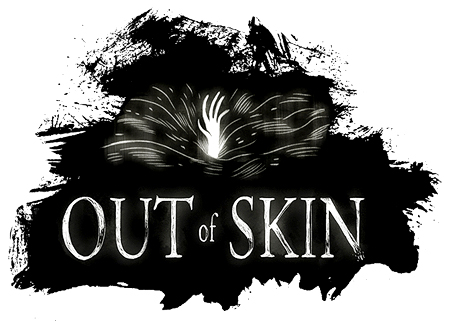
* Some of the notable titles left out of consideration due to this criteria include Julia Gförer’s Black is the Color (Fantagraphics); Jeff Smith’s Rasl (Cartoon Books); Ben Katchor’s Hand-Drying in America (Pantheon); Ed Piskor’s Hip Hop Family Tree (Fantagraphics); Huizenga and Zettwoch’s Amazing Facts and Beyond (Uncivilized Books); and Michael DeForge’s Very Casual (Koyama).

Pingback: Need To Know… 25.11.13 | no cape no mask
I completely agree about the presentation by Holmberg: the follow up Tezuka volume is equally wonderful. These should be a model for the presentation of reprinted comics.
Pingback: Lose #5 on Jeppe Mulich’s Best of the Year List | Koyama Press
Pingback: Incidents In The Night is Best Again « Uncivilized Blog
I’ve been waiting for the David B. forever!
Pingback: Annual Rituals: Lists « Uncivilized Blog
+1 For Simon Hanselmann! Since this post, he’s exploded! Keeps getting better, 3 books and dozens of zines in!